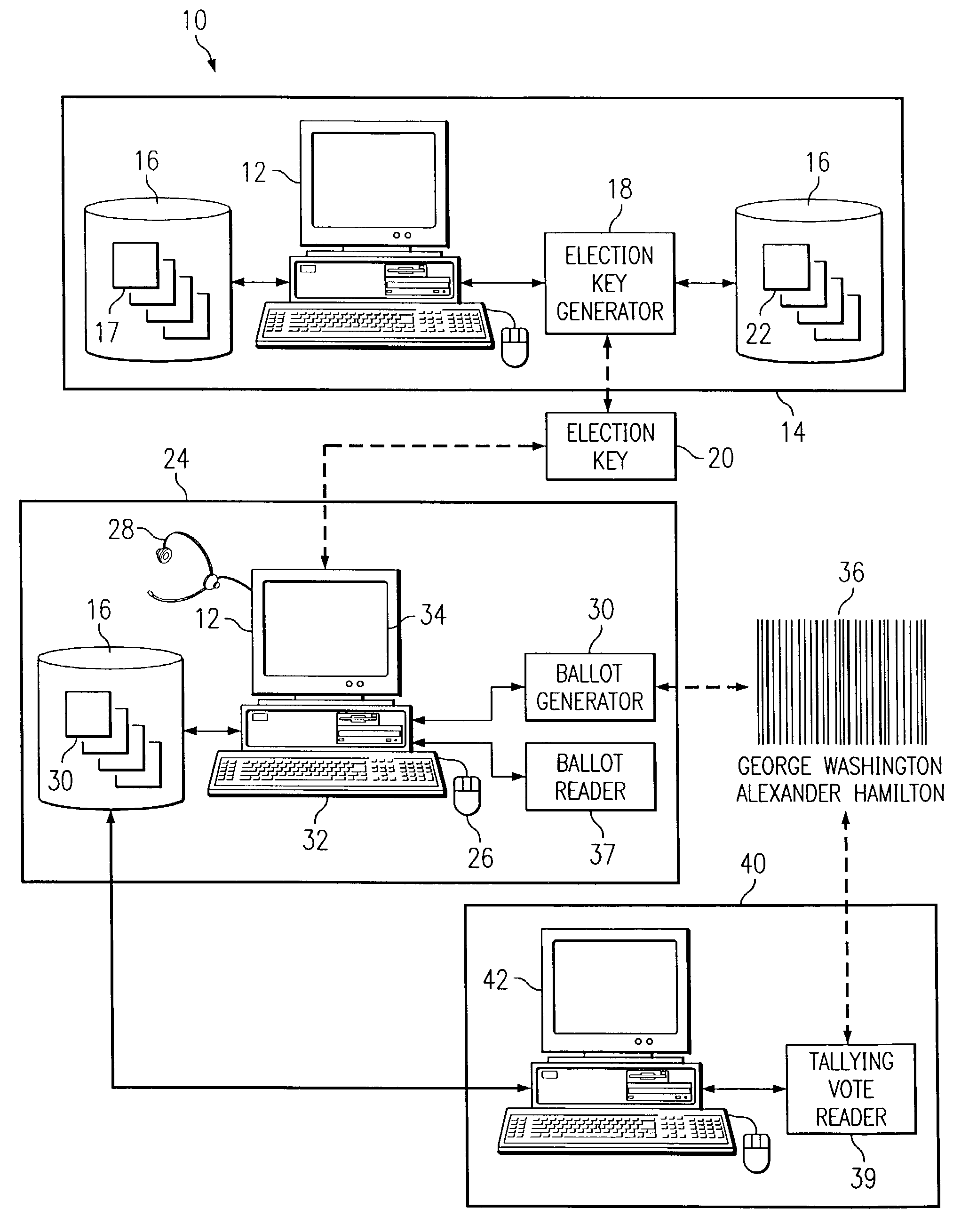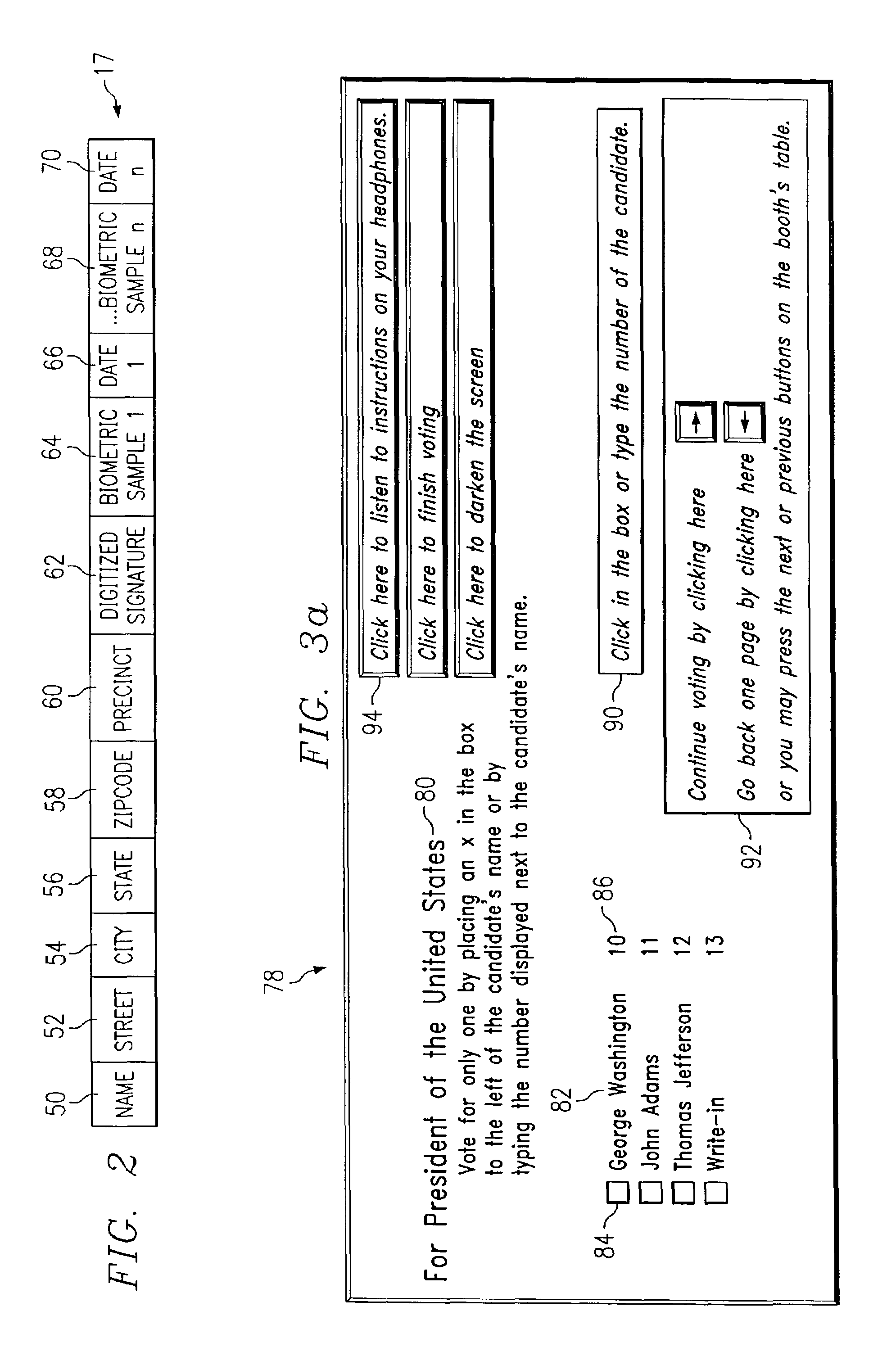Advanced voting system and method
a voting system and advanced technology, applied in the field of voting, can solve the problems of difficult counting accuracy, unclear voters, and problems that have always existed in such systems, and achieve the effect of substantially reducing the disadvantages and problems of previous voting methods and systems
- Summary
- Abstract
- Description
- Claims
- Application Information
AI Technical Summary
Benefits of technology
Problems solved by technology
Method used
Image
Examples
Embodiment Construction
[0023]FIG. 1 illustrates an example advanced voting system 10 including one or more computing devices 12 that create an accurate, anonymous, and verifiable record of voters' selections in machine-readable form. Advanced voting system 10 includes a voter identifier system 14 that stores identifying information associated with a voter and verifies the identity of the particular voter at the time of voter check-in at the polling place. Additionally, advanced voting system 10 includes a voting booth 24 that is operable to display ballot questions, receive voting selections from a voter, and generate a ballot encoded with such selections. Furthermore, system 10 includes a tallying system 40 that is capable of decoding an encoded ballot or may communicate directly with the voting booth 24 to tally votes stored within voting booth 24.
[0024]Voter identifier system 14 includes a computing device 12, one or more data storage locations 16, and an election key generator 18. A previously created...
PUM
 Login to View More
Login to View More Abstract
Description
Claims
Application Information
 Login to View More
Login to View More - R&D
- Intellectual Property
- Life Sciences
- Materials
- Tech Scout
- Unparalleled Data Quality
- Higher Quality Content
- 60% Fewer Hallucinations
Browse by: Latest US Patents, China's latest patents, Technical Efficacy Thesaurus, Application Domain, Technology Topic, Popular Technical Reports.
© 2025 PatSnap. All rights reserved.Legal|Privacy policy|Modern Slavery Act Transparency Statement|Sitemap|About US| Contact US: help@patsnap.com



